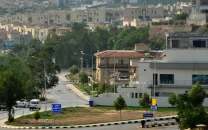Military notes of Indo-Pak conflict — the rundown
Escalation and military preparations took place during May 1–6.

During the last two weeks, in this series, we discussed the perceptual aspects of the recent Indo-Pak standoff, India’s doctrinal collapse, the redefined deterrence and the ‘Exterior’ and ‘Interior Maneuvers’ by both sides, before and during the hostilities. We continue the debate…
This was the first time that India under its supposed ‘new normal’ used ‘cruise’ missiles, both the BrahMos version (PJ-10 co-developed with Russia) as well as the European SCALP-EG targeting Pakistan proper. Pakistan also retaliated for the first time, employing its conventionally armed short-range Fatah-I and Fatah-II series of ‘ballistic’ missiles and other types. This was also the first time that RPVs (drones) were used with the intent of causing damage to the other side, in addition to reconnaissance and intelligence-collection roles. This was also the first time that strategic instability in South Asia was linked internationally to the unresolved Jammu and Kashmir dispute and not terrorism per se.
Let us quickly recapture the timelines from April 22 to May 22, 2025. In run up to the crisis, on April 22, five militants killed 26 civilian tourists in Pahalgam, Jammu & Kashmir, including one Nepali national, leading to Indian finger pointing towards Pakistan-based Jaish-e-Mohammed (JeM) and Lashkar-e-Taiba (LeT) groups. On April 23, India suspended the Indus Waters Treaty, closed Attari–Wagah border crossing, expelled Pakistan’s military diplomats, reduced Pakistan’s diplomatic staff and cancelled SAARC visas for Pakistani nationals. From April 23–30 border skirmishes took place.
On April 24, Pakistan condemned the Pahalgam attack and termed India’s response as “unilateral”; and retaliated by cancelling Indian visas, evacuating Indian nationals, closing its airspace to Indian aircraft, halting all trade and warning India against diverting Indus water, calling it an act of war. On April 25, India initiated ceasefire violations across the LoC. National Security Committee (NSC) met in Pakistan on April 26. Iran stepped forward with an offer to mediate. And on April 30, India banned its airspace to Pakistan, and IAF intruded into Pakistani airspace.
Escalation and military preparations took place during May 1–6. US Secretary of State Marco Rubio, after some initial ambivalence, ‘expected’ to speak with both foreign ministers on May 1. On May 3, Pakistan successfully test-fired its short-range Abdali ballistic missile. India escalated by cutting off all mail and trade links with Pakistan, banning Pakistani vessels from its ports and warned Pakistani ships against entering the Indian waters. On May 4, India stopped downflow from Baglihar dam on River Chenab. On May 6, Pakistan shot down 29 Indian drones near the LoC and in Punjab. And Iran’s FM visited Pakistan proposing mediation.
In the military operations (May 7–10), India launched “Operation Sindoor”, on May 7, conducting missile strikes on nine sites in Pakistan (Bahawalpur, Muridke, Gulpur, Bhimber, Chak Amru, Bagh, Kotli, Sialkot and Muzaffarabad). On May 10, IAF attacked eight major Pakistani air bases, including Nur Khan base in Rawalpindi. Pakistan, early on May 10, retaliated with Operation “Bunyan-un-Marsoos”, launching missile and drone combo on 26 military targets across India, and in the Indian-occupied Kashmir. It also launched another wave of swarm drones, loitering munitions and Fatah missiles targeting 26 locations along India’s western border.
On the same day (May 10), the Saudi FM called for de-escalation, Secretary of State Rubio spoke with both PMs and NSAs, urging restraint. Pakistan’s DGMO reached out to the Indian side for direct military-level communications. President Trump mediated the ceasefire and announced it on X. On May 11, Pakistan claimed victory against India. Both sides subsequently conducted propaganda offensive through aggressive diplomacy by sending delegations to global capitals.
In between the above compressed timeline, a lot went through. The Indian attacks, as per information available through open sources, were ‘supposedly calibrated’ during May 8 and early on May 9, whereas the wider attacks during May 9-10, still ‘presumably’ calibrated, were dangerously escalatory, as these were aimed at Pakistan’s SEAD (suppression of enemy air defences) systems, after IAF having lost aircraft on May 7.
It was sometimes on the morning of May 9 (the US time and evening in India/Pakistan), that the US received unspecified, new but ‘alarming intelligence’ about dangerous escalation between both sides, as reported by CNN and corroborated by The New York Times. The US worries emerged before the dramatic escalation during the night of May 9-10, but no source has actually ‘identified’ those worries.
The ‘speculation’ is that Washington observing Pakistan’s launch of short-range Fatah-I and -II ballistic missiles and others for the first time during May 9-10 night got aggressively involved. Islamabad’s stockpile of tactical nuclear arsenal and Indian thinking of continuing a conventional war of punitive retribution provided a background to it. Some analysts also attribute it to Pakistan’s deft diplomacy, signalling to and drawing on the US interlocution, spurred by ‘readiness changes in Pakistan’s stockpiles’, besides the announced meeting of Pakistan’s National Command Authority, that oversees the non-conventional means of war i.e. the nuclear weapons.
The DG ISPR had, on May 9, declined calls for de-escalation due to the planned riposte under Pakistan’s ‘quid-pro-quo plus’ strategy, to equalise losses caused by the Indian attacks. India later struck Nur Khan airbase around 2:30 am on May 10. This attack was meant to “strike where it would hurt”, to quote the Indian Director-General Air Operations, Air Marshal Bharti. However, that was an escalatory message.
The Indian attacks also targeted Rafiqui, Rahim Yar Khan and Sukkur bases during the first wave of strikes, followed by the IAF strikes at Sargodha, Bholari and Jacobabad airbases and some military infrastructure at Murid, Chunian, Arifwala and Pasrur. This was India “knocking on the nuclear door”, and it presumably provided more muscle and lethality to Pakistan’s riposte, that was dubbed equally if alarmingly escalatory by Washington.
In de-escalation, the predominant view is that the Saudis, the Americans, the Turks and the Qataris rushed to quell India “not because Pakistan asked, but because Delhi could not stabilize the board…Pakistan had not flinched; it had not folded. It escalated, absorbed and redrew the board”.
More on ceasefire exclusively later. Continues…














COMMENTS
Comments are moderated and generally will be posted if they are on-topic and not abusive.
For more information, please see our Comments FAQ